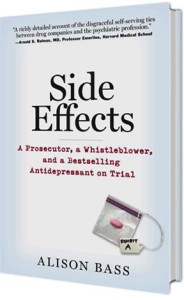First the good news: The Physician Payment Sunshine Act is now law, signed by President Obama as part of the health care bill overhaul. Starting in 2012, drug and medical device companies must report all consulting, speaking and other payments to doctors and teaching hospitals in excess of $100 annually to the federal Department of Health and Human Services, which will post the payments on a public website. This is an important first step toward making transparent the pervasive financial ties between doctors who are studying or promoting specific drugs and medical devices and the companies that manufacture these products.
There is one significant loophole in the law: according to the final provisions, payments related to clinical trials or product development agreements for new products are allowed a publication delay of four years or until product approval, whichever comes first. So if a particular doctor is researching a drug that has not yet been approved for a specific condition, we will have to wait four years to find out whether he or she is on the drug company’s payroll. But at least the disclosure will eventually see the light of day, and patients who are prescribed the drug in question can seek a second opinion from a doctor who is not on the drug firm’s payroll and whose medical judgment can be trusted.
The Physician Payment Sunshine Act, however, only goes so far. While it covers doctors and teaching hospitals, it does not extend to all the advocacy groups and professional organizations that have substantial influence on over how particular illnesses are treated. For example, as I reported, the National Alliance for the Mentally Ill (NAMI), the most powerful advocacy group for people with mental illness, received millions of dollars in funding from drug companies for years — a payola that no doubt spurred this group’s embrace of potent psychoactive drugs over alternative methods of treating mental illness.
And now, in the current Psychiatric Times, two Massachusetts researchers tear the veil off efforts by the American Psychiatric Association (APA) to hide industry funding of its two philanthropic arms — the American Psychiatric Foundation (APF) and the American Psychiatric Institute for Research and Education (APIRE). As Lisa Cosgrove and Harold Burszstajn report: “While the APA recently announced it would phase out the visibly industry-supported educational programs, the organization has remained curiously silent about acknowledging and monitoring industry funding” of APF and APIRE.
Why does this matter? Because the APA is not only a powerful lobbying force in Washington and the premier trade group for America’s psychiatrists but it also publishes the DSM, the diagnostic bible of psychiatry, that largely determines how psychiatrists treat mental illness. As I’ve blogged about before, the proposed DSM-V further broadens the categories of various disorders, which will have the net effect of creating profitable new markets for drug companies.
Hence, Cosgrove, a clinical psychologist at the University of Massachusetts, and Bursztajn, a psychiatrist at Beth Israel Hospital and Harvard Medical School, decided that the public has a right to know about any hidden financial ties between the APA and the pharmaceutical industry. So they investigated and found that the boards of both APF and APIRE were stuffed with high-level executives from companies that make drugs recommended by the APA and with psychiatrists who have financial ties to these drug companies. They discovered, for example, that nine of 16 board members of APIRE had industry ties.
Yet neither organization requires disclosure of financial conflicts of interest. Nor is there much information as to how much money Big Pharma is giving these organizations. In their Psychiatric Times piece, Cosgrove and Bursztajn ask the valid question:
Has industry removed the transparent and visible shell of professional education programs and replaced it with the more opaque shells of foundations such as APF and APIRE?
The authors go onto recommend that individuals serving on APF and APIRE’s boards post disclosure statements and that the total amount of industry funding given to these organizations be posted. They also suggest that the boards of both groups be reorganized to more genuinely reflect a patient-centered focus. They conclude:
Steps need to be taken to lift the cloak of silence that surrounds the issue of indirect or covert ties exerting undue industry influence.
I couldn’t have said it better.



Trackbacks/Pingbacks